|
Home
| |
What are algae?
‘Algae’
was once a taxonomic designation uniting the ‘lower’, aquatic,
photosynthetic organisms, but recent ultrastructural and molecular data have
uncovered a bewildering diversity of species.
Algae are now recognized as 10 divergent lineages on the tree of life
that ally with organisms as distinct as bacteria and eukaryotic protozoans,
ciliates, fungi and embryophytes. Phycologists (those who study algae) have,
therefore, struggled for a contemporary definition for algae, but have generally
failed with some workers suggesting that the term be abandoned.
Despite these difficulties, ‘algae’ is valid in a biochemical context
defining species characterized by chlorophyll-a photosynthesis (except land
plants) and their heterotrophic descendents (secondary
chloroplast loss). In fact this
biochemical link has a phylogenetic base as all eukaryotic chloroplasts are
derived, via primary or secondary endosymbioses, from a common ancestry within
the photosynthetic cyanobacteria (these prokaryotes generally included under the
term ‘algae’). ‘Algae’ is thus a valid phylogenetic term on an
organellar basis, that organelle, the chloroplast, the defining feature of what
it means to be an alga.
Why are algae important?
Algae are generally aquatic in habitat
living in fresh, brackish and saltwater environments worldwide, although some
species live in habitats as diverse as snow, soil and hot springs. Globally algae are considered to fix 50 % of CO2,
and they are the primary “primary producers” in aquatic habitats supporting rich
food chains, and they oxygenate aquatic systems.
From a more anthropocentric perspective algae are used in biomedical
research, cosmetics, and are consumed as food in many parts of the world.
Algae are also important for the damage that they can do to the aquatic
habitat in the form of non-toxic and toxic algal blooms including the infamous
red tides.
|
A green alga, Codium fragile, from
Bamfield, British Columbia:
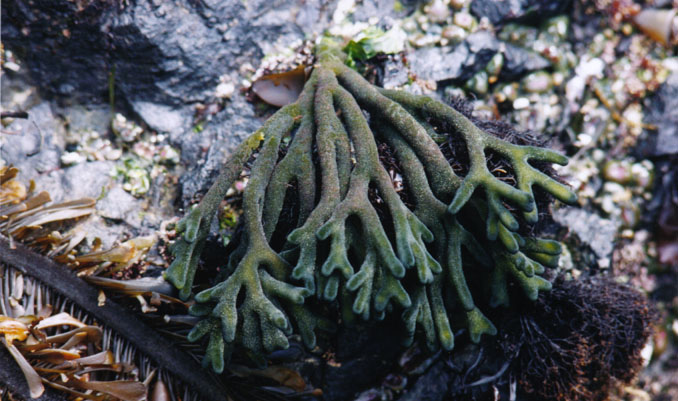
A red alga, Halosaccion glandiforme,
from Bamfield, British Columbia:

A brown alga, Nereocystis luetkeana (juvenile),
from Bamfield, British Columbia:

Here are some kelp photos, taken in Bamfield, BC, May 2001
Macrocystis integrifolia
Eisenia arborea
 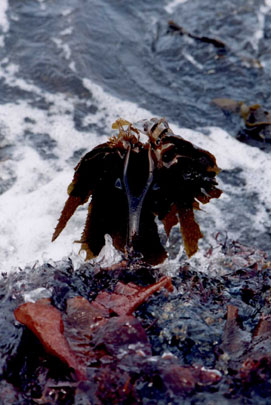
Cymathera triplicata:
Egregia menziesii:
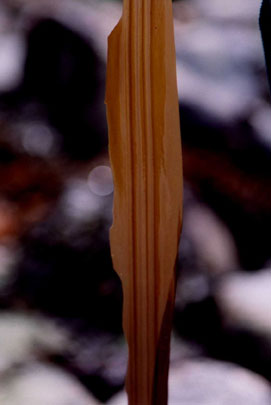 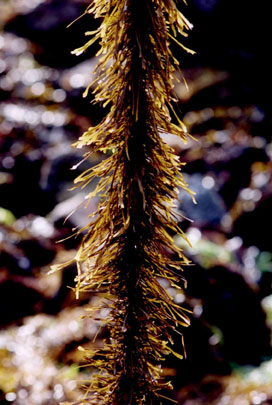
the apical scimitar of Macrocystis integrifolia:
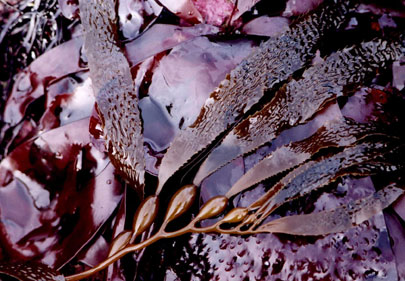
Another view of some pneumatocysts on Macrocystis integrifolia:

|